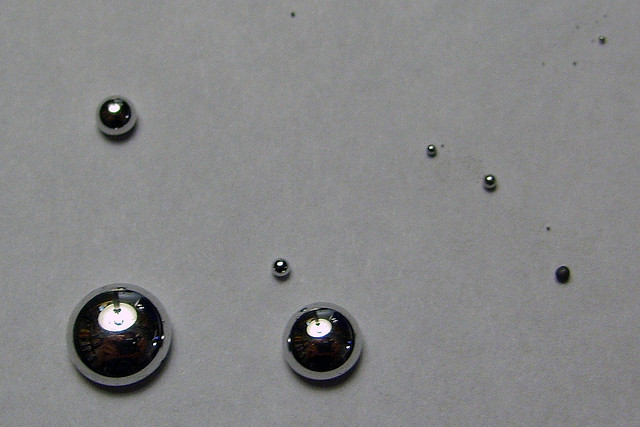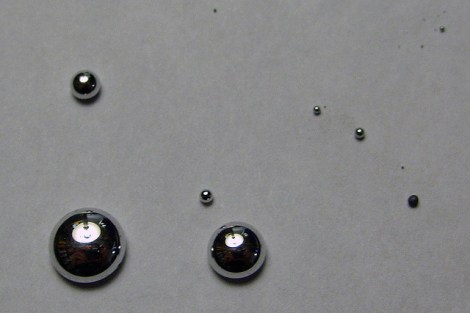In seventh grade, our science teacher would, on rare, special occasions, let us play with mercury. This will be my edition of the crazy-things-that-used-to-be-OK stories that parents tell their kids. “You played with mercury? With your hands?” my kids will ask. Yep. It was stupid.
Where mercury is really dangerous, of course, is in the air. In 2011, the EPA proposed a new standard for the reduction of mercury pollution from power plants. (It is currently under review.) Over the weekend, 140 countries — including the United States — finalized a preliminary agreement to go one step further, proposing to scale back and eliminate a number of uses of mercury, including reductions in emissions from power production. From the United Nations Environment Program:
[The new reductions] range from medical equipment such as thermometers and energy-saving light bulbs to the mining, cement and coal-fired power sectors.
The treaty, which has been four years in negotiation and which will be open for signature at a special meeting in Japan in October, also addresses the direct mining of mercury, export and import of the metal and safe storage of waste mercury. …
Mercury and its various compounds have a range of serious health impacts including brain and neurological damage especially among the young.
Others include kidney damage and damage to the digestive system. Victims can suffer memory loss and language impairment alongside many other well documented problems.
As you may know, the millinery industry in Victorian England relied heavily on the use of mercury. The “well documented problems” mentioned above were frequently seen in hat-makers, resulting in Lewis Carroll’s famous Mad Hatter in Alice in Wonderland.
The Mad Hatter had it relatively good. This weekend’s agreement resulted from UNEP’s Minamata Convention on Mercury, named for Minamata, Japan. During the early 20th century, wastewater from a chemical plant in the city leaked a mercury product into a local waterway. The mercury poisoned shellfish, which people consumed; an estimated 1,700 people died from mercury poisoning over several decades.
Science magazine outlines some of the changes proposed in the agreement:
[The treaty] will require its signatory nations to phase out the use of mercury in certain types of batteries, fluorescent lamps, and soaps and cosmetics by 2020.
The agreement also requires countries to limit emissions of mercury from coal-fired power plants, waste incineration, and cement factories. Countries in which small-scale gold mining takes place must draw up strategies to reduce or eliminate mercury use in that sector. Coal power plants and unregulated gold mining are the world’s two largest sources of mercury emissions and releases into the environment.
The delegates agreed to limit mercury amalgam use in dental fillings, and to phase out the use of the element in medical thermometers and blood pressure devices.
In October, governments will begin signing the treaty. The United States has agreed to the treaty in theory, but that will almost certainly result in a heated political debate in practice. The EPA’s proposed mercury rule — a relatively modest reduction in pollution from coal plants — has elicited an enormous backlash. Extending reductions to other industries will only broaden opposition.
Nonetheless, the agreement is a positive step. Mercury’s negative health effects are well-documented and significant; reducing its use will certainly be an international boon. Be warned: Even minor exposure to the chemical has been known to result in tendentious writing, recycled jokes, and an over-reliance on snark. May our children know better lives than we do.




